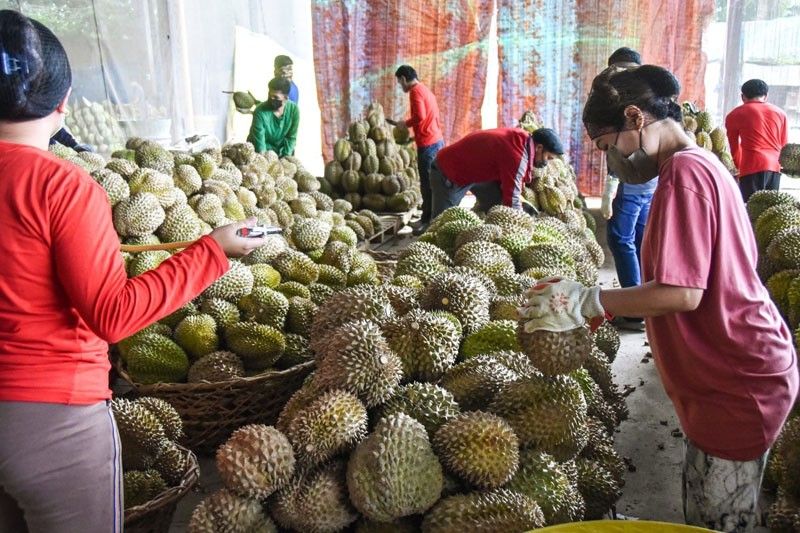Philippines eyes durian trade boom

MANILA, Philippines — Durian trade, which is new to the Philippines, is seen to offer ample commercial opportunities to exporters given its high price and market niche, according to the UN Food and Agriculture Organization (FAO).
In its durian global trade overview, the FAO said durian is an exceptionally high-value crop and has been experiencing vibrant growth over the last two decades.
Based on its data, durian global trade has increased more than tenfold between 2003 and 2022, reaching a peak of 930,000 metric tons (MT) in 2021.
The FAO report also cited high average trade unit values of durian, reaching annual averages of around $5,000 per MT in 2021–2022.
The tropical fruit also reached an average global trade value of approximately $3 billion per annum in 2020–2022, “placing this commodity firmly ahead of fresh mangoes and pineapples,” the FAO said.
“These figures suggest that trade in durians could offer ample commercial potential for exporters, including low-income countries, provided quality assurance, post-harvest handling and transportation of these highly perishable fruits can be managed efficiently and cost-effectively,” the UN agency said.
“In high-income markets such as the European Union and the United States of America, much of the market potential will be contingent on making these fruits more accessible to the consumer and strengthening consumer awareness,” it said.
The bulk or 94 percent of the durian traded is from Thailand, while Vietnam and Malaysia account for three percent.
Meanwhile, small export quantities also originate in the Philippines and Indonesia.
In terms of destination, China is the leading importer of durian, procuring an estimated annual average of 740,000 MT during 2020-2022, equivalent to around 95 percent of world imports, the FAO said.
“China sets strict requirements on imports of durian, and currently only permits imports from Thailand, Vietnam, the Philippines and Malaysia. According to available industry information, for supplies qualifying for import into China, growers and packaging units must provide documented proof of meeting the required phytosanitary and quality standards, including records of pest control and product traceability, which makes it very difficult for new exporters to gain access to the Chinese market,” it said.
The Philippines only recently bagged a $2-billion fruit export deal with China, including an initial $260-million Philippine durian shipments.
These durian fruits were ordered by Chinese companies including Dole (Shanghai) Fruits and Vegetables Trading Co., Ltd/Dole China, Prestige International Co. Ltd., Shanghai Goodfarmer Group, and the Dashang Group.
Apart from China, the Philippines has been exporting fresh durian to Hong Kong, Japan, Malaysia, Saudi Arabia, Singapore, Thailand, the United Arab Emirates, and Vietnam. Meanwhile, the country exports frozen durian to Korea, Malaysia, among others.
From 2017 to 2021, the country’s durian production saw an average growth rate of 2.9 percent, based on data from the Philippine Statistics Authority (PSA).
In 2021, durian output reached 73,867.42 MT, down 6.3 percent from 78,815.99 MT.
Davao Region produced 77.5 percent of the total durian production, 63.7 percent of the total bearing trees and 49.1 percent of total area planted.
The FAO also highlighted the challenge in the trade of durian, which is “still regarded as a novelty or niche product.”
The UN agency said its high perishability “renders transport of fresh produce to distant markets difficult and means that import requirements relating to phytosanitary standards and product safety can often not be met.”
It also noted the lack of consumer awareness and high unit prices as obstacles to expanding its market reach.
“Overall, the fruit remains of relatively minor importance when compared to the export quantities of other tropical fruits, particularly bananas, pineapples, mangoes, and avocados,” FAO said.
- Latest
- Trending






















